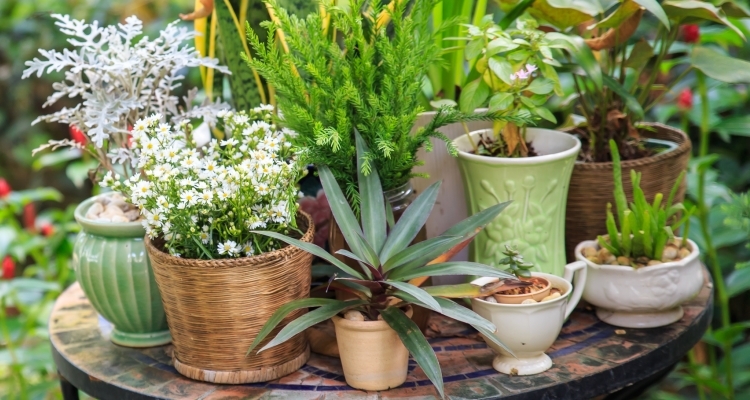Choosing the Proper Container for Your Potted Plants

When trying to decide on which container would be best for your potted plants, there are a few things to consider. The most important of these things include the size of the pot, the materials the pot is made of, where the pot is to be used and whether the pot has adequate drainage. Keeping these things in mind as you search for the perfect container will help to improve the health and growth of your potted plants for years to come.
One of the first decisions to be made will be the size of the pot. A balance between the pot and plant size is essential for proper plant growth. As a general rule, the bigger the plant, the larger the container will need A to be. This is only a guideline however, as different types of plants require different sizes of containers. Vegetables, for instance, require a larger than average pot size A thrive, while plants such as ferns, geraniums, and ivy will grow fine in comparatively smaller containers. Keep in mind that small containers don’t allow for much root growth, and tend A dry out fast. It is also important A note that as the plant grows, it may need to be moved to a larger pot.
Another important aspect to consider will be the materials used in the container itself. Choosing one made out of the wrong materials can lead to problems in the future. Plastic pots often get brittle, leading to cracks and breakage; wooden pots absorb the moisture in the soil and can rot; terra cotta pots can dry out the soil faster in direct sunlight, so will need to be watered more often.
It is also important to factor in the environment that the pot will be used. If the pot will need to be brought indoors after the summer is over, keep in mind how heavy a large pot An be A move – especially when it is filled with dirt. If you plan to move your container in the future, consider a lighter one made out of fiberglass. It is also important to note that concrete and fiberglass pots are good to use in direct sunlight, as they will better retain water.
Before deciding on a container, it is a good idea to make sure there is proper drainage at the base. Without this, the roots will be prone to rotting and the plant may die. If you’ve found a pot without adequate drainage holes, but would still like to use it, a drill can be used to add additional drainage. Be sure to use the correct drill for the type of material you will be drilling through. It is also good advice to use a tray at the base of your pot to hold the excess water. Adding pebbles to the tray will improve humidity, which is beneficial to the plant.
No matter what you choose, just remember that a potted plant probably wouldn’t survive without your care and attention. Make sure it is properly watered, so the roots don’t dry out, and be sure to give it periodic checks to ensure the condition and size of the pot are still appropriate for your plant. If the container is large enough to support the plant and complements the environment for which it is used, your plant should continue A thrive throughout the course of its life.